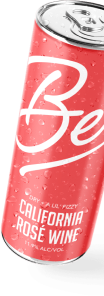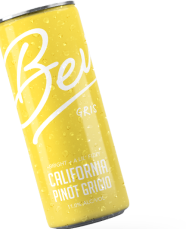
Cider and wine. Two of the most delicious fruity drinks this world has to offer. On the outside, cider and wine seem like they have a lot in common. They are both made from fruit and also happen to be alcoholic beverages. However, if you have had wine or cider recently, you know that they are entirely different tastes. But why? Why are these two drinks that seemingly have a lot in common so different in taste?
The question was seriously weighing our minds, and we figured we weren't the only ones who were curious about this conundrum. Or at least we hoped we weren't alone. So, we made the executive decision that we needed to get to the bottom of it. Therefore, we got our investigative hats on and set out to solve the mystery once and for all. Below, we've outlined what we discovered about cider and wine so the world can be a much better, much more educated place! Cheers!
Cider Vs. Wine: What's The Difference?
In our investigation, we discovered the main differences derived from the following: the fruit used to make both beverages, the fermentation process, whether they have carbonation, the sugar, and alcohol content. Let's dive in!
Of course, the taste of these two alcoholic drinks is also incredibly different, which is what brought us to start investigating in the first place. Ciders are typically very sweet but range in sweetness. Ciders typically range from dry to sweet depending on the apple varieties used, any other additions, and how much fermenting they go through. Wine, on the other hand, has much more variation and can range dramatically depending on the types of grapes used, region of production, fermentation process, and more!

It Starts With The Fruit
Traditional cider and wine are made from different fruits. Well, DUH, that is the most apparent difference between the two drinks. Cider is most traditionally made with apples, while wine is made with grapes. Double duh.
Like grapes, the quality of apples plays a significant role in the ultimate product. The apples used by a cidery vary in size but should be juicy, sweet, well-ripened, and filled with the perfect natural acid levels and tannins. Apple's skin contains many compounds that contribute to the cider's taste; therefore, cider makers don't peel them before manufacturing. Likewise, the seeds are not removed, but they are typically broken during production and do not contribute to the overall taste.
Here is where things get a little trickier: today, ciders are produced in a variety of different flavors and tastes. From strawberry to lime to even grapes, ciders can have pretty much any fruit in them! Therefore, there can be quite a few crossovers between cider and wine. However, when made traditionally, the most significant difference between cider and wine are the fruits.
Switch Up The Fermentation
Because both cider and wine are made out of fruits, both require a fermentation process. But what is the fermentation process we speak of?
Fermentation is a rather complex biochemical process. Essentially, wild yeasts convert sugar to ethanol, carbon dioxide, and other metabolic byproducts. Essentially, yeasts eat up all of the sugar, and you get the beverage you're looking for. The main difference between cider and wine is the length of time the different fruits spend in the fermentation process. Can you guess which fruit takes longer to ferment?
It's grapes! Wines spend a ton more time in the fermentation process, which explains why wine ultimately has a far higher alcohol content than hard apple cider. Because the fermentation process length for grapes and apples are different, so is the production method.
Let’s Look At Sugar

Ah, sugar. A necessary evil. We love sugar and hate sugar all at once. Apples and grapes, the main ingredients in cider and wine, are similar in the amount of good vitamins and fiber they provide but differ in the amount of sugar present. Grapes have around fifty percent more sugar than apples. Plus, they have about forty percent more calories than apples. However, it should be mentioned that the extra calories also come with more antioxidants like potassium, calcium, and beta-carotene.
Because grapes have more sugar, you might assume that wine, therefore, has more sugar. This is not the case!The sugar content in cider versus wine is surprisingly different and comes down to the fermentation process. The longer a drink stays in fermentation, the more sugar gets consumed. Because winemakers let wine sit longer in the fermentation process, one can assume that both red wine and white wine has less sugar than cider.
A cider typically contains a lot more natural sugars than wine, which ultimately makes a substantial difference. Sugar content in cider is around 6% to 15%, while a wine's sugar content rarely exceeds 2%. When wine exceeds 2% sugar, it is typically a dessert wine, or port explicitly made for its sweetness.
More Or Less Alcohol?
As we discussed, the fermentation process also plays into the amount of alcohol the two drinks have. Ciders typically have an alcohol content around the 5% mark, but with wines, you can expect between 13% to 15% ABV with wines. A vast difference!
This also plays a part in serving size. A regular glass of wine will have around the same amount of alcohol as a pint of cider. More specifically, you only need a third of a pint of wine to have the same alcoholic effects as a pint of cider.
What Kinds Are There?
Ciders typically come in two different types: cider (which is not the same as apple juice) and hard cider. The latter being the one that goes through fermentation. There's even a German version of apple wine, called apfelwein, which sort of walks the line between the two. In contrast, there are a plethora of different kinds of wine. From your classics, white, red, and rose wines, to sparkling and fortified, and then it continues to grow. Plus, each of these types massively varied in the types of grapes used as well as their vintages.
Two Different Drinks
All in all, cider is essentially a kind of fruit wine. And, in many ways, all cider is wine, but not all wine is cider. And while cider and wine share similarities but are different due to differences in their production method. Because they are both made from fruit, you'd think they would have more in common.
SHOP BEV NOW




 MY COOLER
MY COOLER



